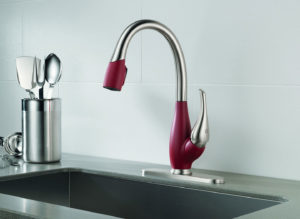The faucet is one of the most important fixtures in the plumbing system. As any kitchen plumber in DC will tell you, the faucet is one of the most functional fixtures in the plumbing system. It’s an important water control and delivery fixture in the plumbing system. The faucet or tap is used to deliver water and to control its flow rate when turned on. The faucet has a fascinating history. It has come a long way since the ancient days of the Greek and Roman plumbing system. Nowadays we have smart faucets that use motion sensors to turn on and off. We also have touch faucets that are turned on by the slightest touch anywhere; on the handles, spout, or the head. The historical evolution of the faucet is related to the historical evolution of water supply pipes. This is mainly because faucets usually form the functional end of the water supply pipes. Also many pipes and faucets were manufactured from the same material; copper. Today we are going to take a journey down history lane to discover how the modern faucet came to be.
Ancient Pipes And Faucets
The first faucets can be traced back to the Minoan Palace of Knossos in Crete. Terracotta pipes used faucets to supply water in this ancient kingdom as early as 1700 B.C. The faucets used in this ancient plumbing system were made from gold, marble, and silver. The Roman Empire started using lead pipes from around 1000 B.C. to around 476 A.D. During this period, public Roman baths had silver faucets, and other gold and marble fixtures.
The Quaturn Cartridge
In 1913, Albert Brown invented the Quaturn Cartridge. This cartridge required just a quarter turn instead of the several turns required by other faucets in use during this period. The Quaturn Cartridge became very popular because it preserved the washers in the faucet.
The Single Handle Faucet
Al Moen started worked on a single handle faucet from 1940 to 1945. He got the idea after scalding himself with overheated tap water in 1937.
The Faucet Ball Valve
 In 1952, Landis Perry designed the first faucet ball valve. The faucet mixed hot and cold water using volume control. Perry patented his facet ball valve design in 1952.
In 1952, Landis Perry designed the first faucet ball valve. The faucet mixed hot and cold water using volume control. Perry patented his facet ball valve design in 1952.
The Delta Faucet
Using Perry’s faucet ball valve design, Alex Manoogian designed the first washerless ball valve faucet. He called this faucet the Delta Faucet and founded the Delta Faucet Company. This is one of the leading and most innovative faucet manufacturers in the world today. The Delta Faucet Company went on to design very many innovative features for faucets and showers.
Electronic Faucets
Electronic faucets were introduced in the early 1980s. These faucets use sensors to detect motion and turn the faucet on or off. Electronic faucets are designed to conserve water and also to offer a convenient and healthy way of using the faucet. The Delta Faucet Company introduced the first hands-free electronic faucet for residential use in 2001.
Touch Faucets
Delta Faucet Company introduced the touch faucet in 2008. This faucet turns on and off after being touched anywhere including the handles or the spout. You can use your hand, wrist, forearm, or elbow to turn on a touch faucet. Delta has continued to design and develop many innovative faucets and faucet features including the Physical Vapor Deposition (PVD) and the Universal valve design.
Regardless of what type of faucet you have, if you suspect a drip or a leak, call your local plumber for leak detection services immediately, to minimize damages.



